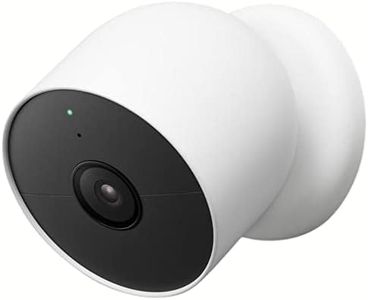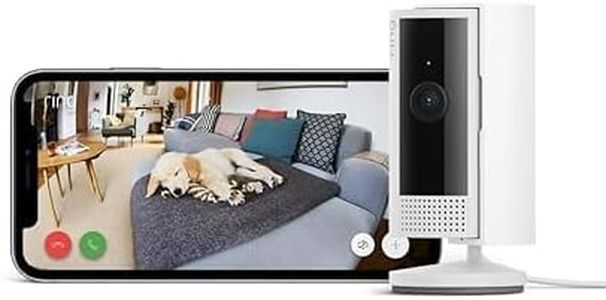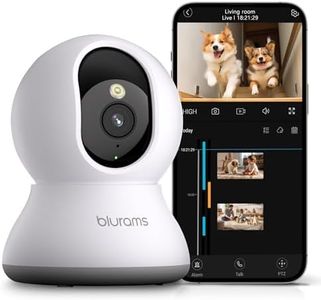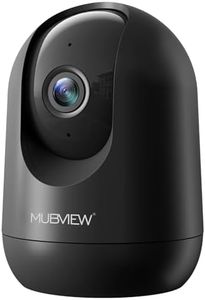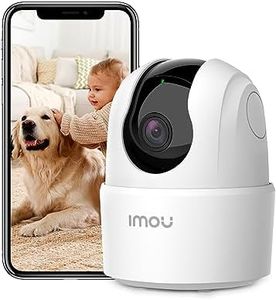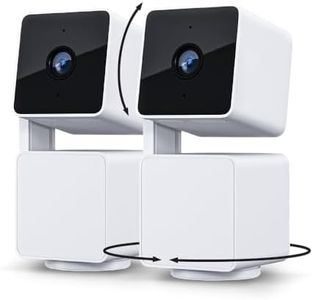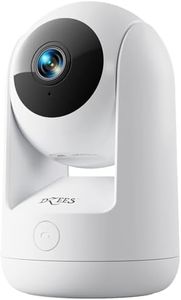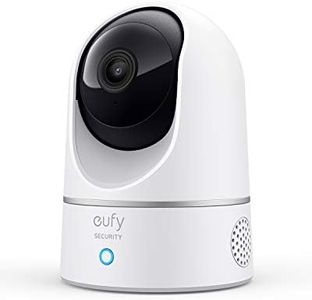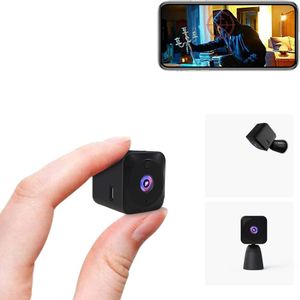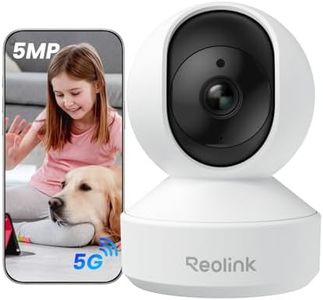We Use CookiesWe use cookies to enhance the security, performance,
functionality and for analytical and promotional activities. By continuing to browse this site you
are agreeing to our privacy policy
10 Best Indoor Security Cameras
From leading brands and best sellers available on the web.Buying Guide for the Best Indoor Security Cameras
Purchasing an indoor security camera is a great way to improve peace of mind at home or in your workspace. With so many options on the market, it’s important to understand your specific needs and match those to the camera's features. Start by asking yourself why you want the camera—do you want to simply check in on pets, or are you more concerned with security and evidence gathering? Identifying your goal will help you make sense of the many features and specifications that cameras offer. Here’s what to focus on as you shop.ResolutionResolution tells you how clear and detailed the camera's video footage will be, usually measured in pixels such as 720p, 1080p (HD), or 4K. Higher resolution means clearer images and more detail, which is important if you ever need to zoom in for a closer look or identify faces or objects. Lower resolutions (like 720p) are usually enough for basic monitoring, but for seeing fine details or using footage as evidence, go for 1080p or higher.
Field of ViewField of View (FOV) describes how much of the room or area the camera can see at once, typically measured in degrees. A narrow FOV (around 60-80 degrees) shows less of the room but may see further, while a wide FOV (over 100 degrees) captures more of the space. If you want to monitor a small area or door, a narrow FOV may be sufficient. For larger rooms or open spaces, a wider FOV reduces blind spots.
Night VisionNight vision lets the camera record clear video in low light or darkness, using special sensors or infrared LEDs. This is important if you need 24-hour monitoring or want security when the lights are off. Some cameras have basic black-and-white night vision, while others provide clearer images or even color night vision for more detail. If you plan to check footage at night or in dim areas, look for better night vision capabilities.
Motion DetectionMotion detection means the camera can notice movement in its view and either start recording or send you an alert. Basic systems just sense any movement, while more advanced ones can tell the difference between people, pets, or objects. If your goal is to catch real intrusions and not be bothered by alerts every time your pet walks by, look for cameras with smarter motion detection or user-customizable zones.
Two-Way AudioTwo-way audio allows you not only to hear what’s happening near the camera but also to speak through it using your smartphone or another device. This is handy for checking in with children, talking to pets, or warning intruders. Consider how often you might want to interact through the camera; if it’s just for monitoring, one-way audio is enough, but for more active communication, two-way audio is a better fit.
Storage OptionsStorage refers to how video recordings are saved—either locally on a memory card or via cloud services. Local storage is private and doesn’t require a subscription, but is limited by the card size. Cloud storage offers more space and keeps your footage safe even if the camera is stolen, but usually requires ongoing fees. Think about how much footage you want to keep and how private or accessible you want it to be when choosing storage.
Smart Home IntegrationSmart home integration lets your camera work with other devices, such as smart speakers or lights. You can control the camera with voice commands or have it trigger other devices. If you already use smart home gadgets or plan to create an automated home, look for cameras that support your favorite systems. If not, this feature may not be important for you.
Power SourceIndoor security cameras are typically powered by plugging them into an outlet or by built-in rechargeable batteries. Plug-in models are easy for places near a socket and offer continuous monitoring, while battery-powered cameras offer more flexible placement but need regular recharging. If you plan to move the camera or use it in areas without outlets, a battery-powered model gives more flexibility.
